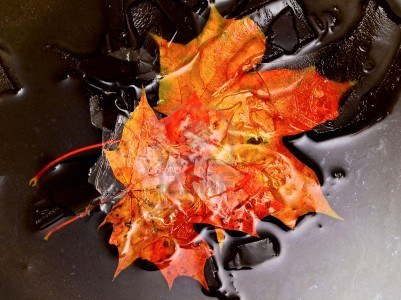Month: October 2012
Why a Tuesday in November?

It has been this way in America since 1845, but how did it come to be?
It may seem to be a random choice today but back in the America of the 1800’s it made great sense. Back then most Americans made their living in rural areas by farming and ranching. As a result Congress needed to determine the most convenient month for farmers and those living in rural areas to get to the polls. Spring and Summer months were dedicated to preparing fields and planting crops. Whereas early November was a time when the harvest was complete and before the harsh winter weather set in that would have prevented travel by horses and buggy over the unpaved dirt roads of the day.
So November was chosen due to the harvest cycle – but why not then make voting day on November 1st? November 1stis a Holy Day of Obligation in the Roman Catholic Church (All Saints Day). In addition, many businesses tallied their sales and expenses and did their books for the previous month on the first of each month. Congress feared that an unusually good or bad economic month might influence the vote if it were held on the 1stof November.
So November 1st is out but why not the first Monday of November? As many folks needed to travel great distances,often requiring and overnight journey to reach their closest polling station. It was therefore determined the optimum voting day be on a Tuesday to avoid the need to travel on a Sunday, the day of rest reserved for attending religious services.
So, in 1845 the US Congress made the law, mandating that the presidential elections would be held every four years on the first Tuesday after the first Monday in November.
Listen to a NPR radio story on the history behind Tuesday voting HERE.
What do you do in an Earthquake?
Did the building just move? Yes, that was a tremor you felt recently when a quake of 4.0 was recorded in New England. Although 800 of them happen a year, it is rare for those of use in New England to feel the shake of an earthquake. It took me awhile to realize it was an earthquake, at first I thought it might be some kind of large truck rumbling by, or something like that. Within seconds of feeling the tremor, friends on Facebook and twitter with posting comments, many of which were “was thatan earthquake?” We just don’t think about earthquakes in this area….but clearly they do happen! So, when one hits what should you do?
|
If you are indoors when shaking starts: “DROP, COVER AND HOLD ON.” If you are not near a strong table or desk, drop to the floor against an interior wall and cover your head and neck with your arms. Avoid windows, hanging objects, mirrors, tall furniture, large appliances and cabinets filled with heavy objects. Do not try to run out of the structure during strong shaking. If you are downtown, it is safer to remain inside a building after an earthquake unless there is a fire or gas leak. Glass from high-rise buildings does not always fall straight down; it can catch a wind current and travel great distances. If you are in bed, stay there and cover your head with a pillow. Do not use elevators. If you use a wheelchair, lock the wheels and cover your head. If you are outdoors when shaking starts: Move to a clear area if you can safely walk. Avoid power lines, buildings and trees. If you’re driving, pull to the side of the road and stop. Avoid stopping under overhead hazards If you are on the beach, move to higher ground. An earthquake can cause a tsunami. Once the earthquake shaking stops: Check the people around you for injuries; provide first aid. Do not move seriously injured persons unless they are in immediate danger. Check around you for dangerous conditions, such as fires, downed power lines and structure damage. If you have fire extinguishers and are trained to use them, put out small fires immediately. Turn off the gas only if you smell gas. Check your phones to be sure they have not shaken off the hook and are tying up a line. Inspect your home for damage. For more information on what to do before and after an earthquake hits click here! And if you have any questions about your Massachusetts Earthquake Insurance, call us at 877.550.0025. |
|
Fallen Leaves Can Leave You Liable!

There is no doubt that the beauty of the autumnal leaves is a highlight of the season. But such splendor can mask danger. Those same beautiful leaves can be dangerous once they hit the ground! Fallen leaves can cause slippery conditions because they contain a large amount of water. Fall is also a time when we experience the first frost,which can add to the slippery surfaces. As the temperature drops, the wet leaves can freeze with a thin layer ofice creating hazardous conditions.
In addition, during the fall, the sun rises later, sets earlier, and often brings foggy days. This limited exposure to sunshine does not allow for wet/frozen leaves to dry out and once well-lit pathways and walkways are now dim. Allcan contribute to a greater potential for accidents
School is in session and children are walking out and about, your postal worker delivering your mail, and of course come Halloween “trick or treaters” will be traversing your property. These are all potential liability claims should they slip and fall on your property. It only takes one false step to become the victim of a “slip-and-fall”accident.
Avoid any chance of injury to yourself or others by clearing walkways and driveways of all fallen leaves, and ensure that they are well lit. If you currently use landscape lighting on a timer, be sure to reprogram your timers in anticipation of daylight savings time.
Protect your family and yourself against these all too often occurring accidents byreviewing your Massachusetts homeowner’s insurance coverage with your agent today. Call us at 877.550.0025
How to Care for your Lawn and Landscaping Before Winter
.jpg)
As the thermometer drops, and autumn arrives, it is time to get your lawn and garden ready for the cold weather ahead. Following these few tips will help your lawn and garden come up green in the spring!
Continue Watering!
One misconception during winter is that grass and plants stop growing, die, and don’t need watering until spring. This couldn’t be further from the truth. Once it snows, the melting snow will be sufficient to keep water levels in colder months. The grass becomes dormant and doesn’t have a quick growth output in the winter, but it still needs moisture.
Keep Mowing!
Grass should be mowed until it slows in growing. The length of your grass is vital in keeping it healthy during its dormant stage. If the grass is too short the cold wind can reach the roots and cause dead sections later in the season.If the grass is too long, the blades can get mold or disease. Stop cutting grass after you notice it stop growing and leave it for a few weeks. This should ensure a good length.
Rake leaves and other debris!
Grass still needs access to sunlight during the winter months. Rake up leaves and debris throughout the season to ensure grass receives ample light and air. Mold, and disease, is common in winter months when leaves and debris are left over grass. Do not leave trash bags, trash cans or other heavy items on grass for long periods of time as well.
If your garden includes a lawn then the early autumn time period is the best time to re-seed, to fertilize, and to add lime
It’s important that you follow the instruction on your spreader when adding fertilizer and lime and amend your soil according to whatever nutrients you need to put back into the ground. Re-seeding your lawn with new grass seed is fairly simple and can be done by hand if your lawn is not too large. Take a soil sample to your local garden supply shop to have the ph tested, and to get their advice on the proper amendments the sail my need. Don’t forget that your plants, shrubs, and bushes can also benefit from an application of fertilizer. Use a slow-release fertilizer and follow the directions on the package to ensure you apply the correct amount.
Prune trees and shrubs!
This will ensure that the plants will come back healthier and fuller in springtime. Every bush or shrub has a slightly different pruning method so it’s best to do a little research on how much material to cut off and where in the branch formation you should cut.
Seal pavers, natural stone, etc.
Before sealing, check to see if new sand is needed in between the pavers to keep water from reaching underneath the walkway. Check your driveway and see if it is in need of resealing if the current surface is cracked, crumbling, or is in general disrepair.
Fall is a great time to plant a new street tree!
Planting a tree near your home increases property value, shades your home during the summer months, and just makes for a better quality of life.
Preventative maintenance on your lawn will shield it from disease and harmful cold as the winter months set in. Consider mulching plant beds and landscaping areas to give an extra barrier against cold and harsh winter winds. Taking the time now to prepare your yard for winter will result in your lawn and garden coming back better and fresher in the spring!
Contact Vargas & Vargas Insurance for an of your auto insurance, home insurance, business insurance, Life insurance or Tax services.













